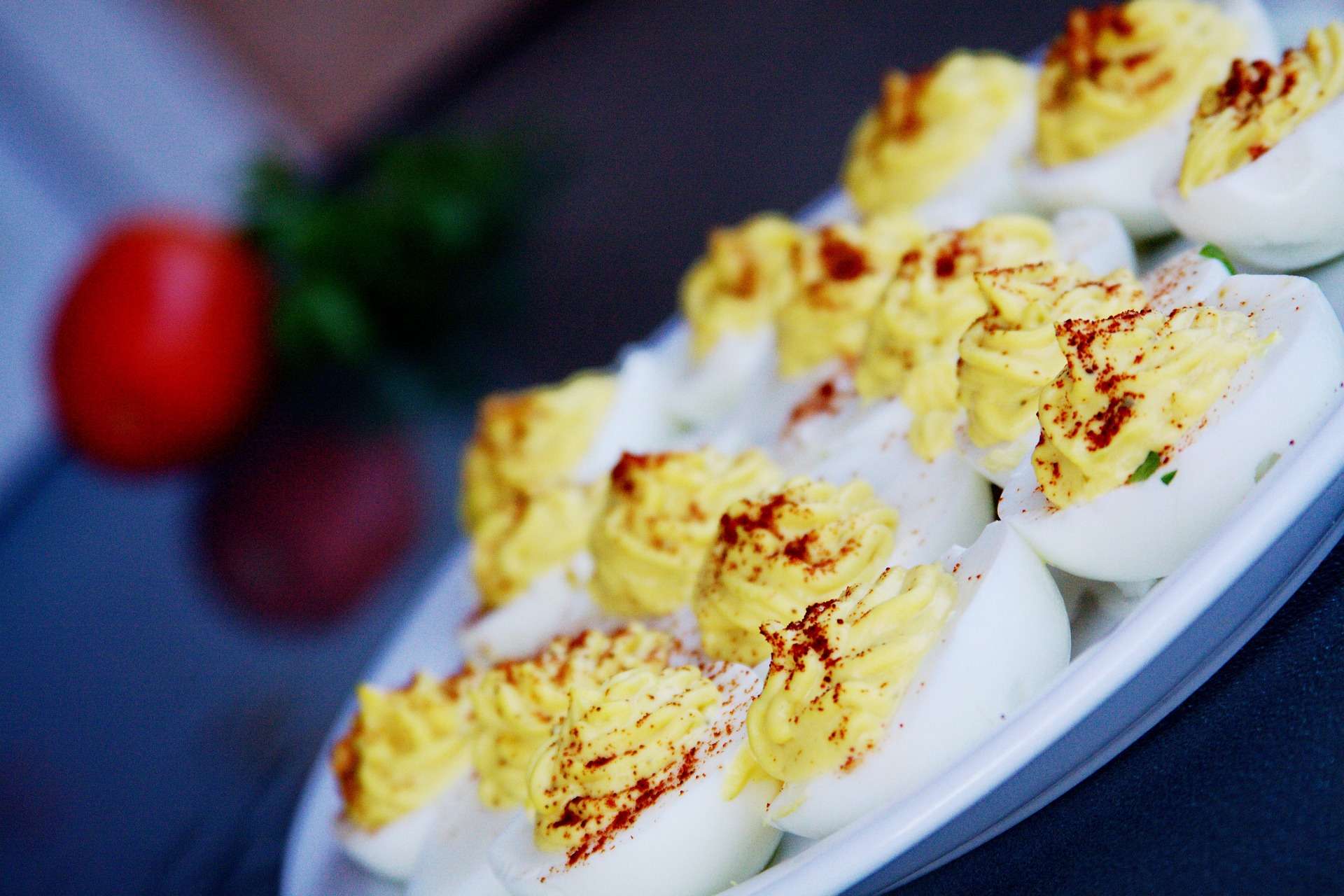Last year around Easter, we shared the history of eggs in general.
This year, in lieu of the recent night of the living egg, I thought we should check out the history behind deviled eggs.
There was no one time when deviled eggs were “invented.” But, eggs and the concept of “deviling” foods has been around a long time.
According to FoodTimeline.org, the Ancient Romans were the first to experiment with boiled egg dishes after learning how to domesticate egg-laying birds.
As early as the 1200s, stuffed eggs began appearing in Andalusia (present day Spain).
In the 1500s and 1600s we began to see the custom of present day deviled eggs being created in England: boiling eggs, removing the yolks, combining the yolks with spices such as mustard and cayenne pepper, then refilling the eggs with the mixture.
The term “deviled” in reference to food was first printed in the Oxford English Dictionary of 1786. Although, the word was probably used prior to that time.
The word deviled as later defined by the 1999 book, The Encyclopedia of American Food & Drink: “Any variety of dishes prepared with hot seasonings, such as cayenne and mustard. The word derives from the association with the demon who dwells in hell.”
Because of those damning associations with hell, deviled eggs over the years have been called other names. Mimosa eggs, stuffed eggs, etc.
The term “deviled” in reference to food items was really made popular thanks to Englishman William Underwood, who set up a condiment business in Boston in 1822.
Decades later in 1868, Underwood’s sons began playing around with a new product. It was a seasoned ground ham. They then started a line of seasoned meat products, calling the seasoning process “deviling.”
Fun side note: Underwood’s deviled ham patent from 1870 is the oldest patent still in use today.
So, deviled eggs are hard boiled and stuffed. The yolks are mixed with the spicy and/or savory seasonings that make it deviled – but what about the filling? The creamy part?
Fannie Farmer’s 1896 Boston Cooking-School Cookbook was reportedly one of the first cookbooks to recommend mayonnaise in deviled eggs. Although mayonnaise became available in our country in 1907, it wasn’t until the 1940s the condiment became a norm in our featured food.
Of course today, cooks everywhere have tried stuffing deviled eggs with everything from buffalo chicken to avocados.
I love how fun and different deviled eggs can be. The hard part for me, is the presentation: spending the time to make them look pretty.

Comments
One response to “Food history: deviled eggs”
Hi Erin,
I love deviled eggs, however, not the “devil” part. I know, what good is it then. It’s basically very fine egg salad. It’s a wonderful combination of spices, and mayonnaise. I’m not fond of the taste of eggs and mustard together. It’s like sucking on a Popsicle stick, that’s just me. But I’m actually exploring many new flavors recently and mustard is one of them…. On salmon? OMG it’s wonderful. Took a class at the Market Bistro Cooking School on Cooking Fish and it was wonderful….